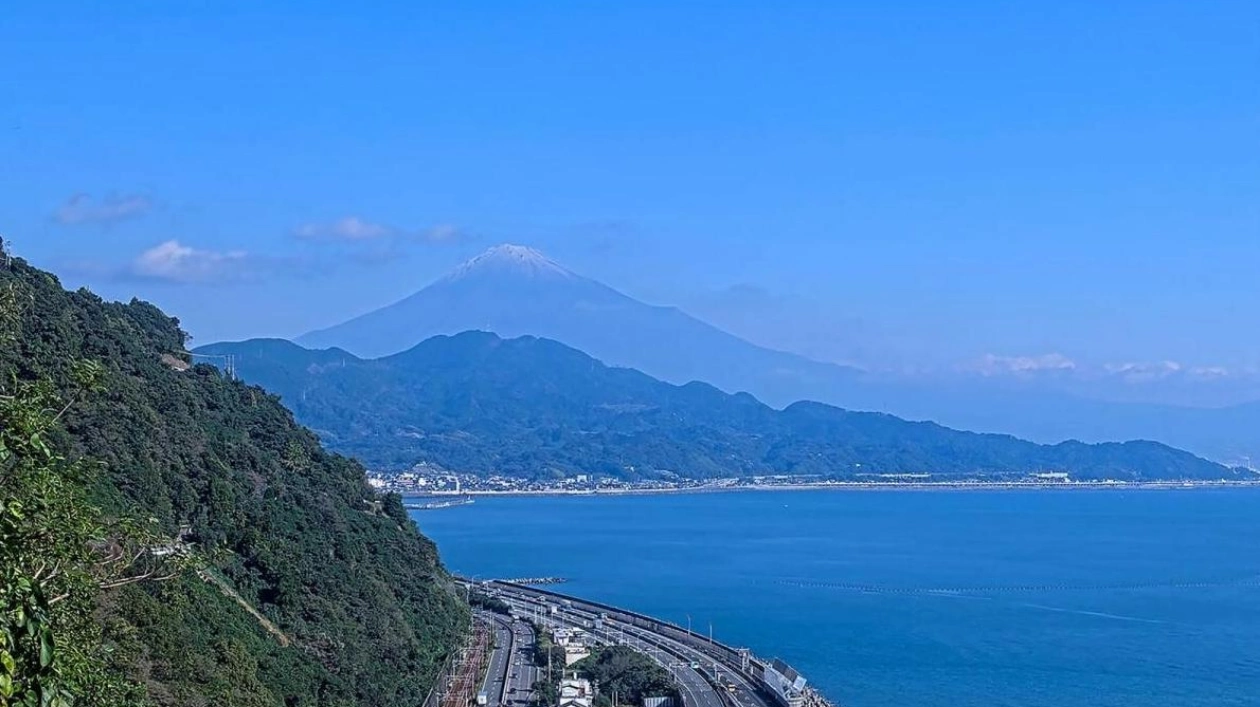Mount Fuji (back L) with a dusting of snow on its peak, seen from the Shizuoka City side of the mountain. — AFP
Japan has abandoned plans to construct a light railway halfway up Mount Fuji and is now contemplating a Chinese-made hybrid between a bus and a tram, according to a local governor. Authorities are exploring a hydrogen-powered transportation system developed by China's state-owned railway company CRRC, alongside other options from Japanese firms. The Chinese Autonomous Rail Rapid Transit (ART) resembles a tram with its various sections but operates more like a bus, running on rubber tires and on roads rather than rails. The 'Fuji Tram' option would substantially lower construction costs while enabling authorities to manage overcrowding during the summer and reduce CO2 emissions, Yamanashi governor Kotaro Nagasaki explained during a press conference unveiling the project.
'While respecting the leading company, my hope is for Japanese firms to undertake this project, and it would be even better if their production base were located in Yamanashi,' he said. The number of visitors to Japan's most iconic mountain has surged in recent years, prompting authorities to seek ways to mitigate the environmental impact. Measures such as crowd control and an entry fee of 2,000 yen ($13) successfully limited the number of climbers to around 178,000 this summer, preliminary figures show, compared to over 200,000 last year.
Authorities in Yamanashi, on the volcano's most frequented side, announced in 2021 plans to build a light rail transit system to the so-called fifth station at 2,305 meters (7,562 feet). Currently, people can drive up a toll road to this point, from where they walk with the crowds to the 3,776-meter (12,388-foot) summit. The estimated cost is 140 billion yen ($900 million), with an interim report last month pointing out technical challenges including brakes and batteries that function in cold weather. Some local citizen groups have also expressed concerns about potential environmental damage.
The tram, the governor said, would connect the volcano with a regional station and is expected to be operational by 2034 or later. A feasibility study will be conducted before being formally presented to local residents, Nagasaki added. An unprecedented influx of tourists is heading to Japan, which aims to welcome 60 million visitors annually by 2030, nearly double the 2019 full-year record.
Source link: https://www.khaleejtimes.com






